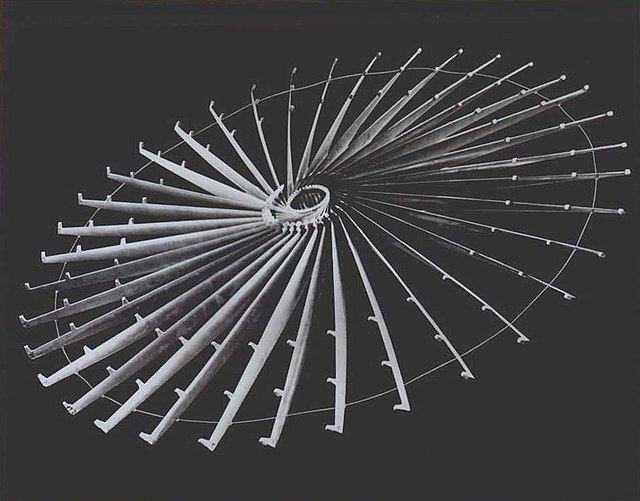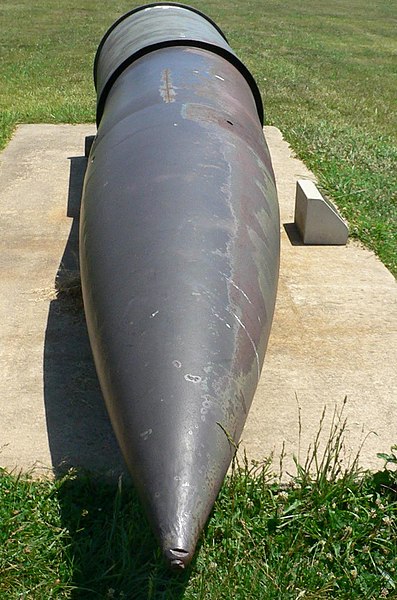A kinetic energy weapon is a projectile weapon based solely on a projectile's kinetic energy to inflict damage to a target, instead of using any explosive, incendiary/thermal, chemical or radiological payload. All kinetic weapons work by attaining a high flight speed — generally supersonic or even up to hypervelocity — and collide with their targets, converting its kinetic energy and relative impulse into destructive shock waves, heat and cavitation. In kinetic weapons with unpowered flight, the muzzle velocity or launch velocity often determines the effective range and potential damage of the kinetic projectile.
The Homing Overlay Experiment used a metal fan that was rolled up during launch and expanded during flight. The metal has five times as much destructive power as an explosive warhead of the same weight.
A projectile is an object that is propelled by the application of an external force and then moves freely under the influence of gravity and air resistance. Although any objects in motion through space are projectiles, they are commonly found in warfare and sports.
A projectile being fired from an artillery piece
Projectile and cartridge case for the huge World War II Schwerer Gustav artillery piece. Most projectile weapons use the compression or expansion of gases as their motive force.
Ball speeds of 105 miles per hour (169 km/h) have been recorded in baseball.
The Homing Overlay Experiment used a metal fan that was rolled up during launch and expanded during flight. The metal has five times as much destructive power as an explosive warhead of the same weight.




